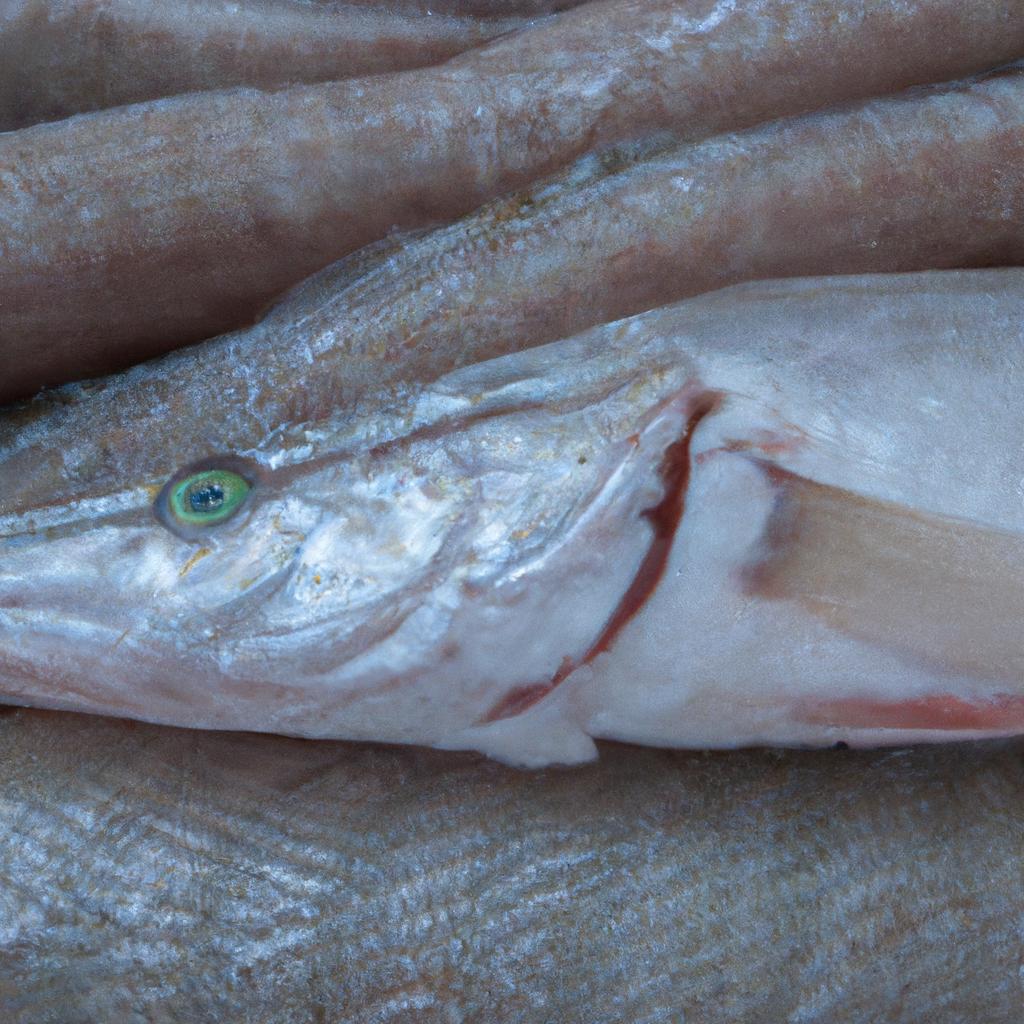Contents
The Whiting Fish: An Overview
Whiting fish, also known as Merlangius merlangus, are small, slender fish that inhabit the North Atlantic Ocean and parts of the Mediterranean Sea. They are commonly found in shallow waters, near the coastlines of Europe, and are a significant commercial fish species. Typically reaching lengths of 30-40 cm (12-16 inches) and weighing between 200-900 grams (7-32 ounces), whiting fish are characterized by their elongated bodies and silver-grey coloration.
Diet and Predators
Whiting fish are primarily carnivorous and feed on a variety of prey, including small fish, crustaceans, and mollusks. Their natural predators include larger fish, such as cod and haddock, as well as seabirds and marine mammals like seals.
A Closer Look at Whiting Fish Scales
As mentioned earlier, whiting fish do indeed have scales. These scales are small, circular, and embedded in the fish’s skin, providing an outer protective layer. Whiting fish scales are known as cycloid scales, characterized by their smooth, rounded edges. These scales grow in concentric circles, with the oldest scales located in the center and the newest ones around the edges. This pattern allows researchers to estimate the age of a whiting fish by counting the number of rings on its scales, much like the rings on a tree trunk.
The Role of Scales in Whiting Fish Physiology
Scales serve multiple functions in the physiology of whiting fish. Firstly, they provide a protective barrier against mechanical damage and infection. Scales also act as a defensive mechanism against predators, making it more difficult for them to grasp onto the fish. Additionally, scales play a crucial role in maintaining the fish’s hydrodynamic shape, allowing them to swim efficiently through the water.
Whiting Fish as a Food Source
Whiting fish are a popular food source in many European countries, particularly the United Kingdom, where they are commonly used in fish and chips. The fish’s mild, delicate flavor and flaky texture make it a versatile ingredient in various dishes, from simple pan-fried fillets to more elaborate preparations like fish pies and stews.
Nutrition and Health Benefits
Whiting fish are an excellent source of lean protein, low in fat, and rich in essential vitamins and minerals like B vitamins, phosphorus, and selenium. They are also a good source of omega-3 fatty acids, which have been shown to provide numerous health benefits, such as improving heart health, reducing inflammation, and supporting brain function.
Whiting Fish in Commercial Fishing
Whiting fish are a significant target for commercial fishing in the waters of the North Atlantic and Mediterranean Sea. They are mainly caught using trawl nets, which are large, cone-shaped nets that are dragged along the ocean floor to capture fish. The high demand for whiting fish has led to concerns about overfishing and the sustainability of whiting fish stocks.

Conservation and Management Efforts
In response to these concerns, various conservation and management measures have been implemented to protect whiting fish populations. These measures include catch quotas, size limits, and restrictions on fishing gear. Additionally, there has been a push towards more sustainable fishing methods, such as selective fishing gear that reduces bycatch and minimizes damage to the ocean floor.
Whiting Fish in Recreational Fishing
Whiting fish are also a popular target for recreational anglers, particularly in the coastal waters of Europe. They are relatively easy to catch, making them an ideal species for beginner anglers and those looking for a fun, family-friendly fishing experience.
Tips for Catching Whiting Fish
When fishing for whiting, it’s essential to use the appropriate gear, such as a lightweight rod and reel, and small hooks. Whiting fish are usually found near the ocean floor, so using a sinker or jig to get your bait down to their level is crucial. Popular bait options for whiting fish include small fish, shrimp, and squid. Patience and persistence are key – whiting fish can be finicky biters, so don’t be discouraged if they don’t take your bait right away.
Conclusion
In conclusion, whiting fish do have scales, and these fascinating creatures have a lot more to offer beyond this simple fact. Here are ten interesting facts about whiting fish:
1. Whiting fish are found in the North Atlantic Ocean and parts of the Mediterranean Sea.
2. They are characterized by their elongated bodies and silver-grey coloration.
3. Whiting fish have cycloid scales, which are small, circular, and embedded in their skin.
4. Scales provide protection, defense, and aid in hydrodynamics for the fish.
5. Whiting fish are a popular food source, commonly used in fish and chips.
6. They are an excellent source of lean protein, vitamins, minerals, and omega-3 fatty acids.
7. Whiting fish are a significant commercial fish species, caught mainly using trawl nets.
8. Conservation and management efforts have been implemented to protect whiting fish populations.
9. Whiting fish are also popular among recreational anglers, providing a fun and accessible fishing experience.
10. Using the appropriate gear, bait, and techniques can increase your chances of success when fishing for whiting fish.
Remember to always fish responsibly and sustainably, and enjoy the fascinating world of whiting fish!
FAQs
What fish has no scales?
One example of a fish that has no scales is the catfish.
Does white fish have scales?
Yes, most white fish have scales. Examples of white fish include cod, haddock, and tilapia, all of which have scales. However, some white fish, such as catfish and monkfish, do not have scales.
Is whiting fish kosher?
Yes, whiting fish is generally considered kosher according to Jewish dietary laws. However, it is important to note that it must be properly prepared and inspected by a qualified kosher authority to ensure that it meets all the necessary requirements.
Is whiting a healthy fish to eat?
Yes, whiting is a healthy fish to eat as it is low in fat and high in protein. It also contains omega-3 fatty acids, which are beneficial for heart health and brain function. However, like all fish, it is important to consider the source and avoid consuming fish that may contain high levels of mercury or other contaminants.
What does the Bible say about eating fish with scales?
According to the Old Testament, fish with scales and fins are considered clean and can be eaten, while those without scales and fins are unclean and should not be consumed.
Why does the Bible say not to eat fish without scales?
The Bible prohibits eating fish without scales because they were considered unclean and possibly harmful to eat according to Jewish dietary laws and traditions.





